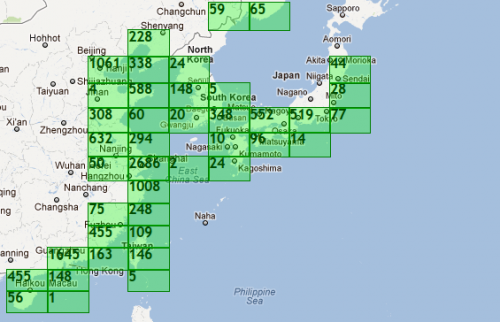I couldn’t think of a better title. It’s a tongue-twister but it is in reference to the Live Ships Map on MarineTraffic.com based on Automatic Identification System (AIS) transponder data and iAIS.
You can find out a lot of information about ships underway. There is no data off the coast of East Africa, let alone Somalia, unfortunately. So here’s the Bay Area, as an example instead:
Clicking on one of the ships brings up its dox.
A micro view shows proximity of the boats and, in this example, you can even watch the pilot boat come out to greet the Filipino “Sun Right” ship and take over navigation for the Bay.
A macro view tells a very different story. If you pull out far enough on the maps you get green boxes with numbers indicating the number of data feeds. California ports show hundreds at the most. Green boxes around the Asian ports show numbers in the thousands.
Take a look at Shanghai. Pink squares represent navigation aids. Green is cargo, red is a tanker, grey are “unspecified”.
You also can create watch lists or “fleets,” search for specific vessels and ports, display their tracks, show predicted courses, and add GRIB (wind) data. Even small vessels should be able to easily incorporate this data into warning, distress and chart systems, marking a huge difference in situational awareness especially in low/no visibility conditions.
I am curious about the ability to build fleets or watch lists based on manifests such as port of call or country…imagine building a map with the tracks and the predicted courses for all the fuel tankers from or headed to a country.
I also wonder about correlating the movement of tankers to the rise and fall of fuel prices. It is said that diesel prices in the Bay Area rise when tankers arrive from Latin America and fill up. Not all the data is clean, however. I ran through the Shanghai ships reporting themselves as passenger vessels and found at least one that was actually a oil/chemical tanker.





